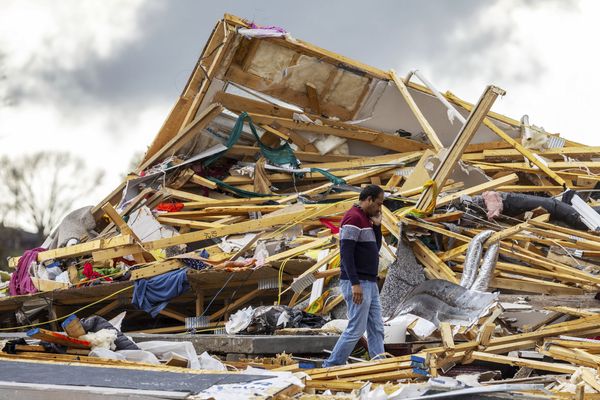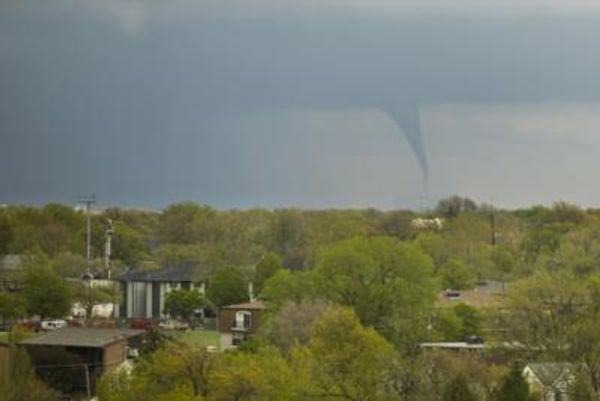Worse fires, longer droughts, and more severe floods — the projections from one of the world's most significant reports on climate change make for scary reading.
The latest IPCC report says that within a decade, global warming could push temperatures to 1.5 degrees Celsius above pre-industrial levels, and calls on policymakers to take urgent action on climate change.
The report is making headlines around the world, and the United Nations has referred to the situation as a "code red for humanity".
So what are the report's key findings? What is the IPCC? And why is this particular report such a big deal?
Let's break down what it all means.
What does the IPCC report say about how fast we are warming?
In the 30 years since the first IPCC report was prepared, we've released almost as much greenhouse gas into the atmosphere as humans did throughout our entire history up until 1990.
To be clear, between 1990 and 2021 alone, we released about 41 per cent of all CO2 released since 1750, according to Pep Canadell, head of the Global Carbon Project.
CO2 levels now are higher than they've been for at least 2 million years.
As a result, warming has accelerated, as have the devastating impacts of extreme weather around the world.
All up, the world has warmed by just under 1.1C, the report concludes. That's compared to the "pre-industrial" baseline, which is treated as the average temperature from 1850 to 1900.
That might not sound like much, but consider this: when the world exited the last ice age, all it took was 5C of warming. And that happened over 5,000 years.
During that period, it took about 1,000 years to warm by 1.5C; now, we're on track to warm 1.5C in about 50 years.
Humans have not existed in a climate like this before, and it's getting worse.
If we reach 2.5C of warming, that will be a temperature the Earth has not sustained for at least 3 million years.
Why would reaching 1.5C by 2030 be a big deal?
Back in 2015, as part of what's called the Paris Agreement, the world's governments agreed to keep global warming to below 2C this century.
But they agreed that ideally, global warming would be limited to 1.5C — and promised to pursue efforts to do that.
The reason for that particular target is that each incremental bit of warming causes big changes to extreme weather like dangerous floods, heatwaves, cyclones, and droughts. Heating the world to 2C would make life much more difficult for humanity.
Now, the latest IPCC report has found keeping below that threshold of 1.5C is highly unlikely.
It examines a series of different possible futures, and in all of them, we cross the 1.5C threshold before about 2035, and in the worst scenario by 2028.
In the most ambitious scenario, we rapidly cut emissions today, get to net zero emissions globally by 2050, and then continue to suck CO2 out of the atmosphere.
In that scenario, we reach 1.5C in about 2035 and then dip back down below it again.
Current pledges made by countries, however, get us nowhere near that. Instead, they take us towards about 3C of warming by the end of the century — something that would be disastrous for much of humanity.
What is the IPCC, and why is it important?
It's the Intergovernmental Panel on Climate Change, or IPCC. You may see news stories about climate change fairly often, but the IPCC's work is significant for several reasons.
It was set up by the United Nations in the 1980s, and aims to synthesise all that we currently know about climate change.
To do that, it combines and assesses a massive amount of science — tens of thousands of research papers — and boils it down into something relatively digestible. While its final report will be thousands of pages long, a 40-page "Summary for Policymakers," was released on Monday, and is what most people rely on.
What's important to know is that the key Summary for Policymakers is fundamentally a report by governments. After hundreds of scientists write the report, it's then approved — line-by-line — by 195 governments around the world.
Mark Howden, who is vice chair of the IPCC and a professor at ANU, says that means it's hard for governments to ignore it when they design policy.
"Rather than being external to the governments, it's actually part of their processes," he says.
"And that helps inform those government policies."
What's the latest IPCC report everyone is talking about?
Back in 1990, the IPCC released its First Assessment Report.
The report released on Monday was the first part of the Sixth Assessment Report, the rest of which will come out over the next year.
These reports are the most comprehensive analyses of what is known about the Earth's climate: how it is warming, what the impacts will be and how we can stop it.
The section released on Monday looked at the physical science of climate change.
The next part, coming out soon, looks at the impacts of climate change, and the final instalment looks at how to mitigate those impacts.
What are the other key takeaways from the report?
There is no longer any doubt that humans have changed the climate.
The report says: "It is unequivocal that human influence has warmed the atmosphere, ocean and land. Widespread and rapid changes in the atmosphere, ocean, cryosphere and biosphere have occurred."
Amazingly, another type of human pollution has in fact cooled the Earth a little.
The greenhouse gases we've been emitting into the atmosphere would have warmed the world by 1.5C already, if it weren't for aerosol pollution. Aerosol pollution comes with its own problems — it is thought to contribute to millions of deaths globally each year through lung cancer, heart disease and stroke.
The report says many of the changes we've already caused will now persist, or continue to change, for centuries or millennia — particularly oceans, ice sheets and sea level.
When it comes to sea level, the report says that by the end of the century we're likely to see a rise of between 28cm and 55cm.
But because of uncertainties about how ice sheets in Greenland and Antarctica will evolve, it can't rule out a 2-metre sea level rise by the end of the century, and a 5-metre rise 50 years later.
Professor Howden describes the possibility of such sea level rises as "seriously scary".
What does global warming mean for Australia?
In Australia, the impacts we'll see will be an acceleration of those we've already lived through.
Fires will get even worse, they'll happen more often, and the fire seasons will get longer.
Heavy rainfall events that can cause flooding will also get worse, but for many parts of Australia, it will rain less often.
Droughts in the south-west of the country will continue to get worse, and if we reach 2C, droughts will get worse in eastern Australia too.
Although the number of cyclones might decrease, their average intensity is expected to increase.
The next part of the IPCC report, released next year, will focus on the impacts of climate change, and we'll hear a lot more about that then.
What can be done about climate change?
While the IPCC's report makes for grim reading, there are some reassuring details.
It isn't too late to secure a future where warming is kept below 1.5C and we avert many of the most worrying impacts.
In November the world is gathering at the COP26 climate change conference in Glasgow, Scotland. Countries are expected to "ratchet up" their pledges to cut greenhouse gas emissions in line with their promise to try to stop warming at 1.5C.
For that to work, countries like Australia need to reach net zero emissions before 2050 so that the whole world can hit that milestone by 2050.
But crucially, near-term targets need to be in line with that goal.
Australia has a 2030 target to cut emissions to 26 per cent below 2005 levels, yet continues to approve new coal and gas projects.
UN secretary-general Antonio Guterres says the IPCC findings must "sound a death knell for coal and fossil fuels, before they destroy our planet".
IPCC vice chair Mark Howden says the world needs to cut emissions by about 45 per cent by 2030 — and of course, rich countries need to move faster than others.
Conservation groups argue Australia needs to slash emissions by 75 per cent this decade.







